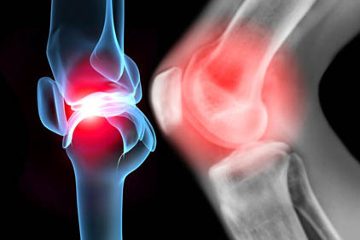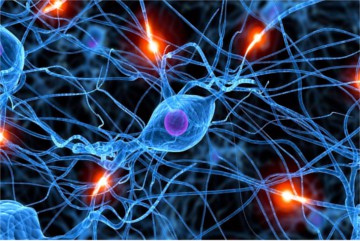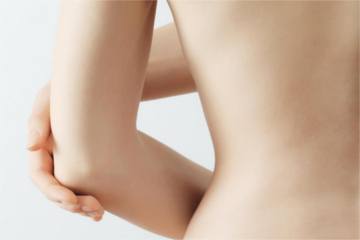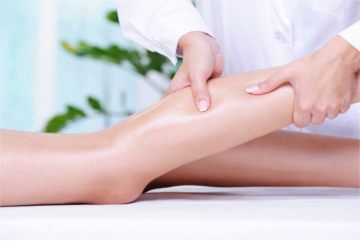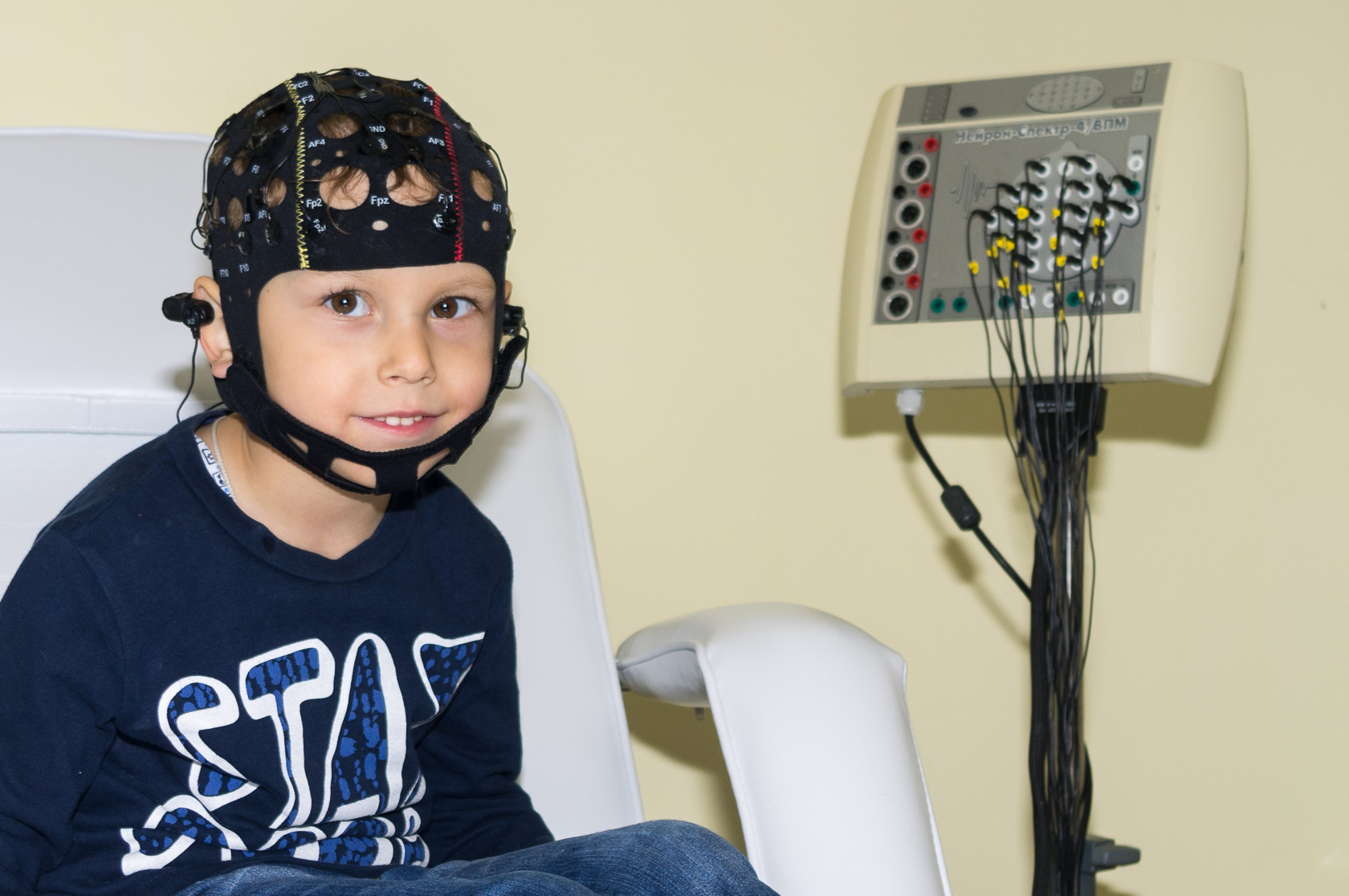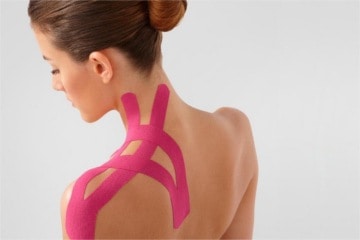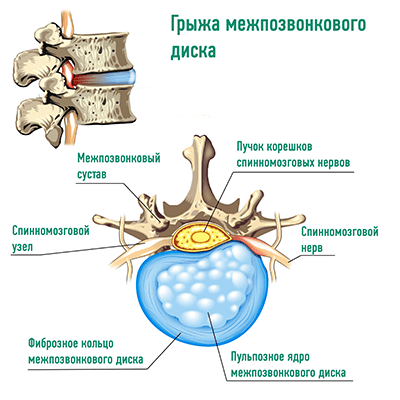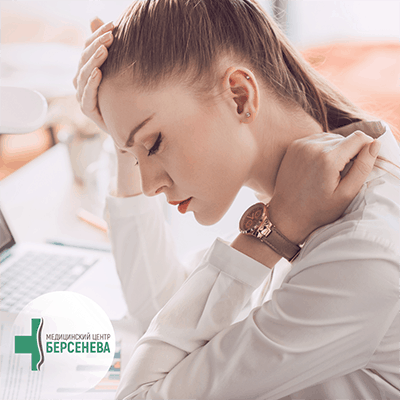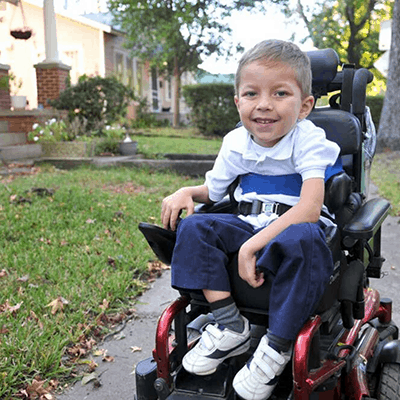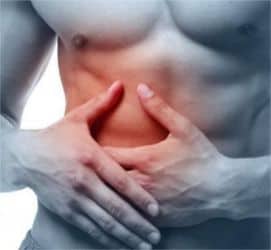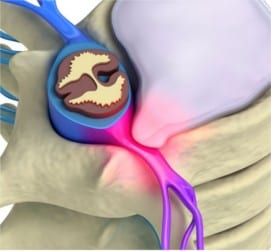Clinical treatment program
The combination of acupuncture of gradient zones (zones of maximum biological activity) of the affected metamer with simultaneous injection of medicinal treatment with neuroprotective and neuroregenerative effects form the basis of metameric technologies developed by Dr. Bersenev.
The basic medication is Cerebrolysin, which is a nerve cell split into biologically active amino acids and peptides. If necessary, other certification medications with neurotrophic and neurometabolic activity are used (Ceraxon, B vitamins, Nucleo-CMP, Neuromidine, Cortexin, and others). In total, about 15 drugs are used in the clinic children’s department. Thus, a “building material” is actually injected into the affected nerve structures, thereby improving and normalizing the function of the spinal ganglia, the main links in the neurometamer structure.
Multiple puncture of compromised areas leads to the normalizing of all three types of disorders – sensory, reflex and trophic. As a result, sensitivity is gradually restored, pain is reduced, and the intervertebral disk regains its natural elasticity and strength. This is due to the improvement of neurotrophic processes and metabolism improvement in the affected metamer. The fact is that thanks to targeted treatment, the body’s “cleaners” (monocytes) are activated. In peripheral blood they constitute from 1 to 8 percent of the total leukocytes number. Metameric treatment methods mobilize and activate monocytes, forcing them to gather in the affected metamer.
For metameric injections we use disposable syringes with short and thin needles, so the pain of medical procedures is reduced to a minimum.
There are practically no contraindications to metameric injections. The only contraindications are early pregnancy, psychiatric diseases and epilepsy.
Treatment sessions and therapy regimens
Regeneration of the nervous system is a complex and long-lasting process. All tissues of the human body (except teeth) are able to regenerate, but at different times. The skin grows over the course of weeks; the bones grow back together over the months. And nervous and cartilaginous tissues, including the intervertebral disc, recover much more slowly – within 1.5–2 years. This topic has always caused a lot of controversy among neuroscientists. Despite popular belief that the nerve cells do not restore, there are several mechanisms of regeneration. Indeed, most neurons are not fissive, but the nerve cells can also appear from their predecessors. In addition, there exist the notion of “sprouting” – growth, branching of the axon in the place of its damage. The truth is that the recovery rate is limited by slow remyelination processes of the nerve fiber, and this process can take several years. But it is not worth denying the ability of the nervous system for self-restoration.
The trophic function of the nerve structures (ganglia) of the corresponding segment of the spinal cord (metamer) plays a key role in restoring the damaged intervertebral disc. By improving metabolic processes in the nervous tissue through metameric technologies, it is possible to facilitate the early regeneration of spinal structures and, indirectly, the upper and lower limbs joints.
Treatment in our clinic may last from 1.5 to 2 years, depending on the disease severity, the prevalence of degenerative-dystrophic processes, the development of secondary neurotrophic and psycho-emotional disorders.
During this time, the patient undergoes 2 – 4 metameric therapy regimens with long intervals between them (from 3 to 6 months). It depends on many factors (on the patient’s well-being, disease state, concomitant pathology, etc.)
The preliminary number of procedures (sessions) is determined after the initial medical consultation, anamnesis, clinical neurological examination of the patient, familiarization with medical documentation. The duration of the 1st course of treatment usually depends on the stage and degree (“neglect”) of the degenerative processes, patient‘s age, the rate of metabolic processes, concomitant diseases, and a lifestyle. In most cases, 1st course consists of 15-20 procedures, and every other course – from 10-12 procedures (that is, significantly shorter). This may be due to the fact that on refresher treatment courses, as a rule, patients feel much better, clinical remission is achieved, and many procedures are carried out only with the preventive purpose.
Treatment sessions last 5-10 minutes and are carried out by the attending doctor in specially equipped procedure rooms. In case of acute pain, treatment sessions are held daily, in case of chronic pain – 2-3 times a week, sometimes once a week.
Home treatment program
After completing the clinical treatment program (a course of metameric injections), the home treatment program begins (post-hospital rehabilitation period). It is developed for each patient individually adjusting to the development stages of degenerative-dystrophic diseases of the musculoskeletal system, concomitant somatic pathology, patient’s age, and a number of other causes and factors. These recommendations are issued to a patient during the first treatment course and for the next few years become an individual implementation guidance of rehabilitation methods at home.
The recommendations also contain a detailed medication dosage regimen, compiled by the attending physician. A special place in the recommendations is occupied by the scheme of metameric acupressure (point massage), which has a powerful reflex effect on the metamer structure. After each course of treatment, the recommendations are corrected and are handed out again for their implementation.
The home treatment program is simple, effective and does not require special prior training and knowledge.
The most important thing is to conscientiously follow the recommendations of the attending doctor, indicated in the prescription schedule, and to follow a certain sequence and frequency of medical procedures.
All patients of our clinic have the opportunity to attend a lecture devoted to home rehabilitation program. This lecture is conducted by a doctor for FREE.
The lecture covers the following questions:
- Discussion of all therapeutic modality methods used outside the clinic, their necessity and sequence of implementation. Influence through all 7 metamer tissues (dermatome, myotome, sclerotome, enterotome, vasotum, glotome, neurotome).
- Antiplatelet, lymphatic drainage, chondroprotective therapy in an integrated treatment of spine and joints disorders.
- The applicability of orthopedic devices (cervical fixatives, lumbar corsets, retractors, usage procedures, wearing time, and relevance.
- Sanatorium-resort treatment, physiotherapy treatment, physical therapy as the necessary links during the rehabilitation period. Indications, contraindications.
- Metameric massage, its advisability and necessity, procedure methods, types of masseurs.
The World Health Organization (WHO) experts say that only 10% of human health depends on the medical care, another 10% – on heredity, and same – on the environment. The remaining 70% of human health entirely depend on the personal attitude to his/her own health.
Therefore, we actively engage patients into an active treatment process, in order to encourage them to be healthy, to give up many addictions, to take a fresh look at their disease and to be able to resist the disease exacerbations. Indeed, the patient himself must be primarily interested in the treatment outcome.
Treatment effect
Many years of practical experience with the use of metameric technologies prove that this unique proprietary methodology, developed by the honored doctor of Ukraine, Volodymyr Andriiovych Bersenev, is rightfully considered an effective treatment method of spine and nervous system diseases.
Our experience allows us to confidently affirm that at the end of treatment while meeting all the medical recommendations followed by the periods between treatment courses the patient can get rid of pain syndromes and return to a full-rate life.
People, who are used to a constant pain living, notice a significant clinical improvement sometime after the treatment onset, and in 1.5 years they forget about pain for life. But such the excellent treatment outcomes occur only if the patient has firmly and finally decided to recover and pays a lot of efforts in return. It should be noted that the effectiveness of treatment directly depends on many factors: the patient’s age and lifestyle, comorbidity, degree of disease “neglect”, and its duration. In most cases it is possible to achieve a positive therapeutic effect. According to statistics, 26% of patients experience sustained disease remission, 55% have positive changes, 5.6% have significant clinical improvements and 2.4% have relative improvements.




























